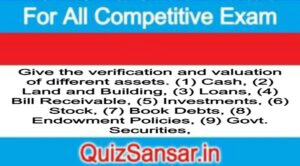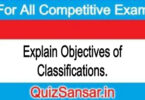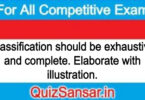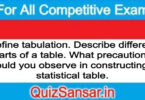
Give the verification and valuation of different assets. (1) Cash, (2) Land and Building, (3) Loans, (4) Bill Receivable, (5) Investments, (6) Stock, (7) Book Debts, (8) Endowment Policies, (9) Govt. Securities,
Give the verification and valuation of different assets. (1) Cash, (2) Land and Building, (3) Loans, (4) Bill Receivable, (5) Investments, (6) Stock, (7) Book Debts, (8) Endowment Policies, (9) Govt. Securities, (10) Patent Rights and Trade Marks, (11) Copyright, (12) Assets in a Foreign Country, (13) Furniture and Fixtures, (14) Plant and Machinery, (15) Loose Tools, Patterns, Dies, etc. (16) Property, (17) Goodwill.
Ans.
VERIFICATION AND VALUATION OF DIFFERENT KINDS OF ASSETS
Having discussed the general principles of verification and valuation of assets and the duty of an auditor in relation thereto, let us proceed further. to discuss the verification and valuation of various types of common assets which usually appear in the balance sheet and the duty of an auditor in connection with each particular assets. It may again be pointed out that an auditor does not guarantee the accuracy of the valuation of any assets.
(1) Cash
(i) Cash in Hand- The auditor should consider the following points while verifying cash in hand-
(i) Physically count the cash in hand on the date of the balance sheet.
(ii) Properly check all the cash balances, if any simultaneously as far as practicable to avoid any substitution.
(iii) The auditor should undertake surprise check of cash.
(iv) If there is any difference in actual cash in hand and cash balance as per books of accounts, the auditor may ask for the explanation from the management.
(ii) Cash at Bank- (1) The auditor shall get a certificate from bank for cash lying in different accounts like saving account, current account and fixed deposit account.
(2) The auditor shall examine bank record statement in case of differences between balance as per pass book and balance as per bank column of cash book.
(3) Cheques beyond six months period may be inquired by the auditor.
(4) The auditor shall see that post dated cheques or received have not been accounted for payment or receipt for the period under audit.
(5) The cash at bank shall be properly disclosed in the balance sheet but it should not include state and dishonoured cheques.
(2) Land and Building
(1) The auditor shall see that land is shown separately in the balance sheet as building is subject to depreciation while land is not.
(2) It can be verified by inspecting original title deeds.
(3) To auditor can physically inspect to ensure the existence of land and building.
(4) If the land and building is mortgaged, title deed would be in possession of mortgage. A certificate to this effect shall be obtained from them.
(5) The purchase or sale made during the year should be carefully examined. If there is any profit or loss on the sale, it should be properly adjusted.
(6) The expenses incurred should be properly classified into capital and revenue.
(7) If building are under construction, auditor shall get the receipts for the amounts paid to the contractors. If client’s own staff is engaged in the construction, then ensure that reasonable basis of allocation of costs have been adopted.
3. Loans
Loans may have been advanced-
(a) Against the security of land and property; or
(b) against the security of stock and share; or
(c) against the security of goods; or
(d) against the security of insurance policies; or
(e) against the personal security of the borrower, etc..
4. Bills Receivable
The auditor should examine the Impersonal Ledger or Bills Receivable Book with the bills receivable in hand. Some of the bills might have been sent out for collection in which case an inquiry should be made from the bank. It would be better if the auditor prepares a list of the bills thus:
(a) Those which have been discounted earlier and the date of the maturity of which has not arrived at the date of the balance sheet in order to find out contingent liability, if any.
(b) Those which have not been discounted should be entered in the second column and compared with the bills in hand.
(c) Those sent for collection to the bank should be entered in the third column and verified from correspondence or certificate from the bank, etc. The auditor should see that a note in regard to contingent liabilities against the bills discounted is made at the foot of the balance sheet.
While examining the bills, the auditor should see that they are properly drawn, stamped, duly accepted and that they are not overdue. In case there is a doubt about the payment of the bill on the due date, sufficient provision should be made.
5. Investments
If there are a large number of investments, as in the case of banks and insurance companies, the auditor should ask for a schedule of investments held by his client. The schedule should give full particulars of the investments, e.g., name of the investment, the cost price, the market price, book value, date on which the investment was acquired, rate of interest payable and the dates of the payment of interest, tax deducted and so on and compare these with the records in the books of his client.
(6) Stock
(1) If the stock is over valued, the profits will be inflated which can be misused by the managers or partners for earning more commission. If it is under valued, the market prices of shares will fall or secret reserve may be created.
Hence it is the duty of auditor to see that it is not done as this practice is always determental to the interests of business itself.
(2) It is the duty of the auditor to ensure that the valuation is done in accordance with accepted accounting principles. As regards determination of cost, auditor shall verify stock records, physical verification shares and costing records etc.
(3) The auditor may also perform test checks to satisfy himself that inventories have been correctly valued.
(4) The auditor shall also ensure that inventor have been properly disclosed in the financial statement as per relevant statutory requirements.
7. Book Debts
The auditor should see that the debts as shown in the balance sheet are recoverable. If they are doubtful, provision should be made for them. If they are bad, i.e., they are irrecoverable, they should not be shown on the assets side. If the auditor does not pay any attention to these points, the balance sheet which he certifies to show a “true and fair view” may be wrong and he might be held liable for damages.
8. Endowment Policies
Sometimes Endowment Policies are taken out to provide funds for redeeming some liability falling due at a later date or to replace an asset later on. The most common form of such policies is Sinking fund Policies for the redemption of Debentures. The auditor should physically inspect the policies and see that the premium payable has been paid and that the policy has not lapsed.
(9) Govt. Securities
(i) The auditor shall verify the investments made by the entity are within its authority and whether all legal requirements specified in companies act, memorandum of association have been complied with or not.
(ii) If there are large number of investments, auditor should obtain or schedule of investments duly certified by the manager.
(iii) The auditor shall check the documentary evidence like allotment letter, brokers contract note, delivery note etc.
(iv) The auditor shall physically verify the investments if possible.
(v) If the investment (like shares) are held in scriptless or demateralised from them statement of custodian or depository can serve as evidence.
(vi) If investments are placed with the bank for safe custody the bank certificate must be obtained by the auditors.
(vii) If these are placed with the broker then not only a certificate be obtained rather they must be physically examined by the auditor.
(viii) The investment must be properly valued and disclosed in the balance sheet. The current investment are valued at cost or market price which ever is lower on the other hand long term investments are valued at cost.
10. Patent Rights and Trade Marks
The Patent Rights and Trade Marks are verified by examining the certifiers granting such rights or marks. If they have been purchased the auditor should examine the assignment deed and see that they have been duly registered in the name of his client.
11. Copyright
This is a sole right to produce or reproduce a book or an article. The life of copyright is the lifetime of the author and fifty years after his death. Excepting this all the remarks relating to patents apply to this type of assets. Actually the value of the copyright is not very firm because they lose their value by the lapse of time. Copyrights, therefore, must be revalued at the date of the balance sheet. If the publication does not command any sale, the copyright should be written off.
12. Assets in a Foreign Country
If documents relating to property in a foreign country are at the head office, the auditor should examine them. However, if they are not available, a certificate from the local auditor should be sought for and examined. The auditor should see that the certificate discloses in clear terms that the assets are free from any charge. The auditor should mention this fact in his report.
13. Furniture and Fixtures
The auditor should verify this item with the help of invoices. Any additions made during the year should be verified in the usual way. Any expense incurred in the purchase of this asset should be debited to the Furniture Account. The auditor should see that proper depreciation is provided and that the net figure is shown in the balance sheet. The amount of depreciation will depend upon the use of which it is put, e.g., depreciation of furniture will be more in the case of an hotel than in an office. Repairs to furniture during the year should be debited to revenue account.
14. Plant and Machinery
This item is also verified by reference to the original invoices, correspondence, etc. Expenses incurred on custom duty, freight, erection of machinery, etc., should be debited to Machinery Account while repairs – should be charged to revenue account. The auditor should see that plant and machinery is properly depreciated. As the auditor is not a technical hand, it may not be possible for him to find out the rate at which depreciation is to be provided; he may have to depend upon the advice of the Works Manager or the Engineer. If Plant Register is maintained, much difficulty will be minimised. Plant and Machinery Account should be shown in the balance sheet at cost less depreciation after making necessary adjustment regarding purchases of machinery made and sale of some parts effected during the year by the concern itself. If plant and machinery is kept abroad, the auditor should get a certificate from the local auditor with regard to the machinery.
15. Loose Tools, Patterns, Dies, etc.
Such assets have short useful life and the value per unit is also low. Hence no separate account is maintained for each unit. There is a danger of pilferage of such assets and therefore proper supervision over these should be exercised. The auditor should examine the list of the loose tools. He should see inact the list has been certified by a responsible officer. This type of asset comprises items like small tools, dies, jigs moulds, etc. Some of them are liable to be lost and some of them consumed very rapidly. Hence the conventional method of depreciation is not applied to them. Montgomery suggests, “charging the cost of replacement of such items to maintenance in lieu of depreciating them is usually a satisfactory alternative.” The suggestion is very reasonable. Where the concern makes its own tools, the auditor should see that they are not valued in excess of the cost.
16. Property
The auditor is not competent to examine the title deeds relating to a property. In such a case he should insist upon the client to get a certificate regarding their validity from the solicitor. A certificate from an architect, surveyor or an engineer will also serve the purpose of the valuation of the property.
The property may be (a) Freehold property, and (b) Leasehold property. Let us see how each class of property is verified and valued.
17. Goodwill
Goodwill is defined as the assessed value of the reputation of a business or as the difference between the purchase price and the net assets which are purchased and the excess amount so paid, represents the goodwill acquired by the business. It is an intangible asset. Its value depends upon the earning capacity of the business and fluctuates accordingly, i.e., it increases with the rise in profits and decreases with the fall of profits. However, it is not valued at the date of the balance sheet like other assets. In case the Directors have debited the profit and loss accounts and credited the amount to the goodwill account, the auditor should object to this step especially when the action taken is likely to prejudice the interest of any class of shareholders. He should mention this fact in his report to the shareholders if such a step has been taken. It does not depreciate even with the lapse of time.
- What is meant by Database Management System?
- Discuss the advantages and drawbacks of database.
- What do you mean by database ? Discuss its Characteristics.
- What is Data Mining?
- What are the conditions of communication?
- What do you mean by business communication ?
- organization / Differentiate between classical and modern theory of organization
- What is forecasting






